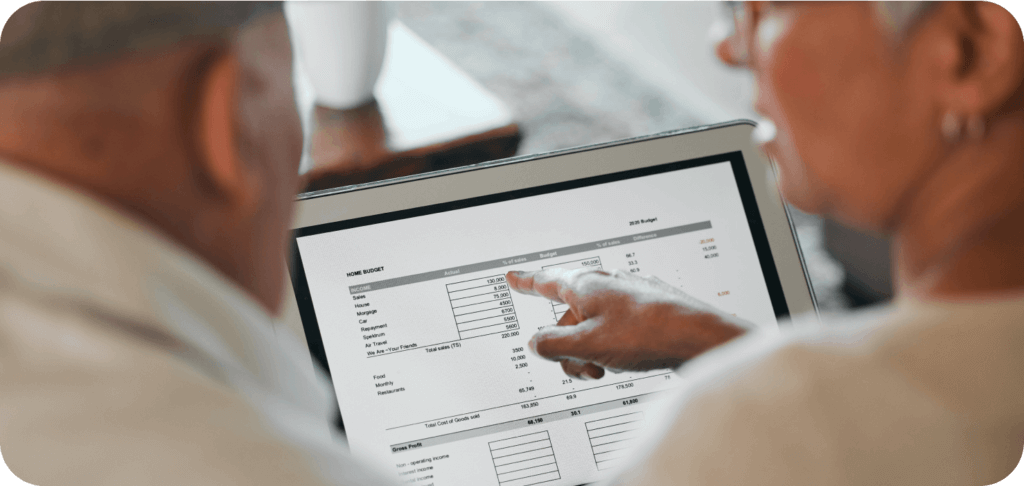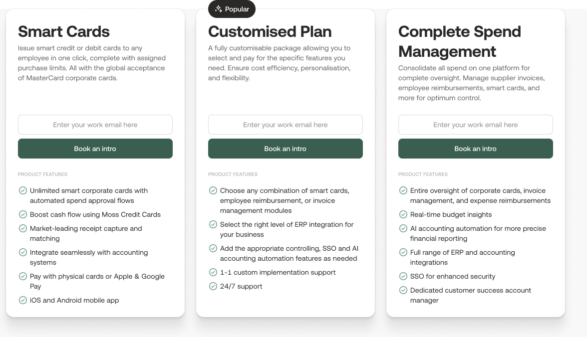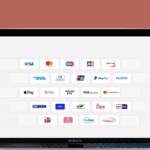Amidst rising inflation and business competition, introducing effective spend management for SMEs is a fantastic way to unlock strategic advantages.
Research from the Global EY Chief Procurement Officer Survey suggests that the presence of active spend management is often a distinguishing gap between average and best-in-class organizations. While average organizations manage about 55-60% of their spending, their best-in-class peers manage close to 85%. Though you might feel this is a small intervention, it’s interesting to note its potential to bring in overall savings of up to 1-2% for the organization as a whole. Therefore, implementing a spend management system is an area worth exploring to thrive amidst uncertainties. It requires tracking expenses, controlling spend, and optimising procurement processes, which using a spend management software simplifies extensively.
In this blog, we explore spend management in detail and cover steps for implementing a robust spend management system for your SME.
What is spend management?
Spend management is a strategic approach to overseeing and optimising an organisation’s expenditures. It involves various processes and practices to ensure every penny spent aligns with the organisation’s financial goals and operational needs.
A robust spend management system considers, a comprehensive view of all spending activities in the organization. This ranges from business expenses and procurement to contract negotiation with suppliers. You might feel, this sounds a lot like expense management. However, it’s essential to note the differences.
What is the difference between spend management and expense management?

Expense management involves recording and reporting the different daily expenses of a business and ensuring they are correctly categorised. Spend management, on the other hand, is concerned with diving deeper and exploring the bigger picture of all company spending. It aims to optimise procurement processes, negotiate better terms with suppliers, and implement organization wide cost-saving initiatives.
In that respect, expense management is a broader and reactive process primarily concerned with compliance and financial reporting. Spend management is a narrower, yet more initiative-taking and strategic process to financial control and efficiency.
What are the spend management benefits for SMEs?
Embracing spend management for SMEs unfolds a host of benefits that help to enhance a company’s financial health and improve operational efficiency. Let’s review some of the key advantages:
- Enhanced spend visibility over expenditures
A robust spend management system unlocks real-time insights into your organization’s upcoming and incurred spending patterns. The increased transparency ensures that every penny spent is accounted for and aligns with your company’s financial goals. With it, you get into a better position to identify potential incidences of overspend, adhere to budgets better and mitigate financial risks.
- Cost savings and efficiency improvements
With a spend management system, there’s improved financial oversight allowing managing expenditures better and reducing costs. Spend management tools share a strategic overview of all your spending, making it easier to identify cost-saving opportunities. Data shows that businesses can achieve 5% to 20% cost savings for every penny brought under spend management.
With spend management tools, you can examine expenses thoroughly and negotiate more precisely with your suppliers to streamline procurement. Research suggests that procurement is commonly around 40 to 80 per cent of a company’s total cost, which explains its cost saving potential. Moreover, you can also identify other meaningful areas to reduce operational costs. This way, you can free up resources to pursue growth and profit-boosting initiatives.
- Compliance adherence
Following different SME regulatory requirements necessitates meticulous expense tracking and reporting. For instance, to follow tax regulations, you need to keep detailed records of all expenses related to aspects like raw materials, labour, and overhead. If you have a comprehensive spend management system in place, you can automate several aspects of this tasks. As a result, up to date information is maintained neatly, which ends up also simplifying compliance. This further helps avoid fines and legal issues from non-compliance.
Implementing spend management effectively starts with using the right toolkit. Spend management software can help with this.
What features make spend management software a game-changer for your business?

Investing in robust spend management software redefines how well your business handles spends. Here are key spend management software features beneficial for SMEs:
- Budget tracking and forecasting
Spend management software provides tools for tracking budgets and forecasting future expenditures. Using them, you can define budget limits, approve or disapprove requests and closely monitor spending in real-time. You can even predict future financial needs based on historical data. Thus, spend management tools can help you arrive at accurate budgeting, its tracking and forecasting variances. As a result, you stay within your financial limits, reduce overspending and plan more effectively for future.
- Expense categorisation and analysis
Effective spend management software includes features to automatically categorise different expenses. This reveals detailed insights into your organization’s spending patterns that could otherwise get overlooked. With categorisation, you can delineate exactly where the money is being spent and circle out potential areas for cost reduction. Thus, you can make informed decisions about resource allocation and eliminate overspending before it’s too late.
- Real-time reporting and analytics
Spend management tools come with capabilities for real-time reporting and analytics. With that, you can access critical financial data anytime and automate the recording of expenses and tracking against your budget. For instance, you can auto-enable credit card spend to be tracked against your budgets. This way you can quickly identify spending trends and opportunities for cost savings as and when expenses occur, with no last-minute surprises.
- Integration with accounting systems
The best spend management systems come with features to integrate with existing accounting systems. With that, you can easily export data from one system into another with a click. As a result, manual work is largely reduced and you can free up your finance team’s schedule to focus on more essential aspects.
- Vendor management and negotiation support
Spend management software also helps you track vendor performance and manage aspects like contracts, spend analysis with each supplier and so on. As the spend management system furnishes detailed insights into vendor interactions and expenditures, you get better clarity to negotiate favourable terms and also build stronger, more cost-effective relationships with them.
How to implement effective spend management for SMEs

Implementing the set-up for effective spend management for SMEs requires strategic planning, the right technology adoption, and a dedicated monitoring process.
Here are the steps you need to follow to introduce a robust and efficient spend management system for your organization:
Step 1: Start with defining spending policies
The first step to building a holistic spending policy is starting with setting a realistic budget, against which you plan track expenses and curtail overspend for different departments. A good starting point to arrive at that number is exploring your historical data for monthly expenses. Based on what you find, measure it against your current plans, as these might involve upcoming expenses outside the purview of your normal budget. For example, launching your product in a different country, or introducing a new product line. With that, set a budget for different roles and departments. Start prioritizing spending on high- impact areas for best results. As a part of this policy, also define detailed approval workflows, specifying who needs to approve purchases at various spending levels to ensure accountability. Finally, communicate the spend policy across the organization to ensure everyone understands and adheres to it.
Step 2: Adopt technology solutions
To optimize spend policy implementation, look for a spend management software with the right features to make your life easier. Essential spend management features to look out for include quick and easy setup, ability to customize policies across different teams, automate approval workflows, ensure real-time reporting. It’s also good to look for something that integrates with your existing accounting systems to avoid duplication of work.
Based on the tool you pick, use it to automate functions like expense tracking, approvals, and reporting. This will help you hasten up processes, reduce manual errors and enhance your team’s efficiency.
Step 3: Centralise procurement processes
Merely implementing spend management software isn’t enough. You need to ensure consistency and direct all purchasing activities through a single, controlled system. Adopting a centralized approach will help you gain deep financial oversight. If you use the same vendors, it can help you negotiate more favourable terms with vendors. Make sure you consistently apply the spend policy across all purchases and monitor spending to ensure they’re necessary and within budget, effectively controlling spending.
Step 4: Leverage data analytics
With a spend management system and centralized process in place, you’re mostly there. What you finally need to do is to examine spending data to gain a comprehensive view of the patterns. Dive into your spend management tool’s data analytics features to identify trends and areas of inefficiency. Leverage these insights and predictions to make better spending decisions. Make sure you review regularly to improve spending practices and identify opportunities for cost reduction.
Step 5: Conduct regular audits and reviews
Finally, plan and conduct regular audits to ensure compliance with the spending policy and detect unauthorized expenditures. Look for patterns to identify areas for improvement and use the audit findings to implement necessary changes in spending management. Also, make it a point to revisit your spending policy from time to time to meet evolving business goals.
Follow these best practices and tips for effective spend management

When you implement the above steps to introduce spend management for your SME, make sure you keep these best practices in mind:
- Prioritize employee training and awareness
How successful your spend management system is will depend on how well aware your employees are about the company’s spending policies and goals and how you train them to align with that. So, if you set budgets and are particular about cost control, make sure everyone’s aware. If you’re using a spend management software, ensure you conduct proper training programs when introducing the technology for proper usage.
- Focus on building strong vendor relationships
Building and maintaining solid relationships with vendors is crucial for effective spend management. Building open communication and trust will put you in a better position to negotiate favourable terms, improved pricing, and ensure reliable supply chains. So, when you examine spends, make sure you also review vendor performance. Seek feedback from internal stakeholders and the vendors themselves to identify areas for efficiency enhancements.
- Make continuous improvement a priority
When you implement spend management, remember it is not a one-time task but rather, an ongoing process. As the business needs and market conditions keep changing, what you decide at one point may not be realistic a few weeks down the line. Therefore, getting results out of it requires regular tracking and improvement. Review your spending policy regularly and assess the effectiveness of your spend management strategies.
- Set realistic goals and KPIs
Finally, while you take into spend management with full steam, make sure the targets you set up are realistic. Regularly tracking the KPIs to evaluate progress and ensure the spend management strategy remains aligned with your business goals.
Example of a success story of an SME using spend management software brilliantly
Pizza Pilgrims, an award-winning collection of dining establishments across 20+ sites in the UK, was facing challenges in managing their growing expenses. They used bank-based cards to pay for smaller expenses and had an expense management platform to manage the reimbursements.
Despite having a system in place, things weren’t working out smoothly. Employees often missed adding receipts, and commonly forget where they spent. This was resulting in frequent chasing and escalating of issues. The admin team struggled with manually matching receipts and there was a lack of value-add in their daily tasks. The graver problem was the lack of accountability of their teams towards their expense policy.
They intervened by implementing an advanced spend management tool for SMEs that integrated with their existing accounting software. This transformed their financial processes and helped them gain control of spend management. With it, they could implement an efficient approval process that provided visibility yet reduced manual intervention in every transaction. They could effectively implement spend controls, authorisations, and limits, all in one place. Their previously lengthy credit card process is now replaced with a much more efficient and streamlined process with reduced reconciliation hours. The finance team can easily flag issues, control cash flow more effectively, and plan for economic uncertainties. They can see expenses before they are incurred, and tighter controls reduced frivolous spending.
Build a sustainable, competitive edge with Moss

Mastering spend management is crucial for maximising efficiency and achieving substantial cost savings for your business. Effective spend management for SMEs involves strategic budget tracking, meticulous expense categorization, and real-time reporting. Implementing this is easy using spend management software, which enhances visibility and control over expenditures and mitigates risks.
Moss’s spend management platform is built to simplify understanding how money flows in and out of your business. It draws insights from your different connected business accounts and helps you easily understand how money is spent.
FAQs
Spend management software is a tool designed to help businesses oversee, control, and optimise expenditures. The software integrates various financial processes, such as budget tracking, expense categorization, real-time reporting, and vendor management, into a single platform.
Spend management software enables businesses to streamline operations and ensure compliance with spending policies by providing comprehensive insights via automated workflows.
SMEs need spend management software to enhance financial efficiency, control, and visibility. Given how limited resources and tighter budgets are typical of SMEs, managing spending effectively helps avoid wasteful expenses and optimise cash flow.
Spend management software helps SMEs automate manual spend management processes, and offers real-time insights into spending patterns. This reduces administrative burden and ensures every penny is spent wisely.
Spend management activities involve controlling and perfecting an organisation’s expenditures through procurement planning, vendor management, and expense tracking. It also involves approval workflows, data collection and analysis, regular audits, and effective spend policy communication.
Spend under management is the part of an organization’s total expenditures actively managed according to established policies and controls. It ensures efficient spending of the company budget.








